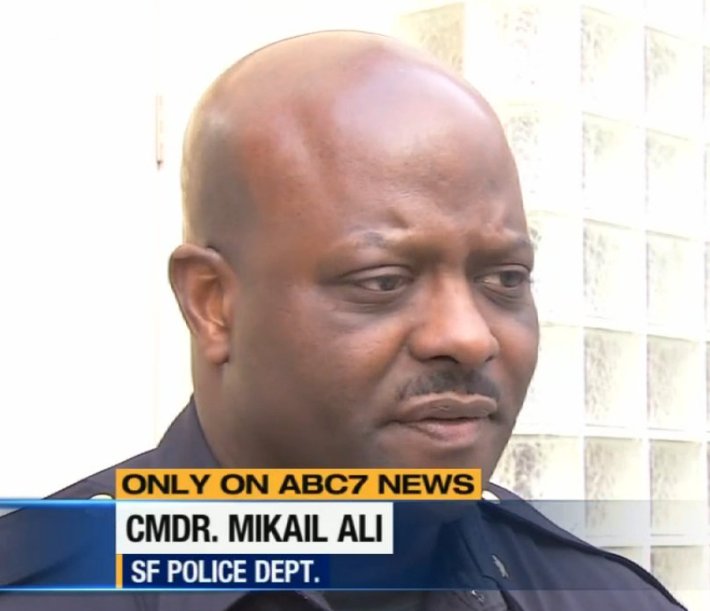SFPD Traffic Commander’s Strategy for Safer Streets: Finger-Wagging
5:51 PM PST on January 13, 2015
For SFPD Traffic Company Commander Mikail Ali, the reason so many people are getting killed by drivers on SF's streets apparently has nothing to do with the fact that every station but one is failing miserably to adhere to the department's "Focus on the Five" enforcement strategy.

Nor is it because SF's streets are overwhelmingly designed to put motor vehicle movement first, rather than the safety of people walking on them. That's according Ali's comments in yesterday's column from the SF Chronicle's Heather Knight, who didn't seem to question Ali's take.
Apparently, Ali's strategy for making streets safer is to keep wagging fingers at the victims who "took major risks" and died. "The hope is that the public will change their behavior voluntarily,” he told Knight. Ali said he’s "been accused of blaming the victim," then proceeded to blame last year's victims.
"A lot of it is just really, really bad behavior," Ali told Knight. “If we play this kind of sterile, numbers-only game, people surmise that it’s fairly innocuous behavior that’s causing these fatalities when in fact it’s very clear what the behaviors are."
It's "clear" indeed for those who do pay attention to numbers and statistics. SFPD's data shows that the five most common causes of pedestrian injuries are all driver violations: speeding, running red lights, running stop signs, violating pedestrians' right-of-way in a crosswalk, and failing to yield while turning. A year ago, SFPD's top brass promised that officers would devote at least 50 percent of traffic citations to those violations under its "Focus on the Five" campaign.
But Ali, who has previously told media that confused Asian immigrants are to blame for many crashes, shirked those responsibilities in yesterday's column. He also showed that he's missed the point of Vision Zero. Crossing the street wouldn't be such a "major risk" if city agencies implemented design and enforcement measures to slow driving speeds and minimize the chance of crashes, even when people make errors.
"It's really troubling that the San Francisco Police Department sees this only as an individual behavior problem, considering that six percent of streets account for 60 percent of severe and fatal injuries," said Walk SF Executive Director Nicole Schneider. "Until they actually meet [their Focus on the Five] goals, I really don't think it's important appropriate for them to call on individuals to change their behavior."
Of the 18 people killed by drivers while walking in SF last year (not the 17 Knight reported), Ali and Knight highlighted the ones in which the victims walked in front of a driver at the wrong time. In one of Ali's examples of "really, really bad behavior" which he "hopes" will stop, a 91-year-old woman was killed on Fillmore at California Street last February when she walked in front of a stopped truck, which could have been blocking the crosswalk.
The only "badly behaved" driver mentioned in the column was Anthony Wisner, who was on meth when he fled police in a stolen van and crashed, killing Zachary Watson. That's not exactly representative of behavior that causes most deadly crashes.
Knight and Ali made no mention of the more common driver violations that killed victims last year, like 87-year-old Pei Fong Yim or 67-year-old Priscila Moreto (Knight herself tweeted a photo of Moreto's crash scene outside City Hall when it occurred). Many cases where victims were crossing outside of crosswalks took place on streets designed for fast driving, and where crosswalks were far apart -- a predictably deadly combination.
"We can't expect people to operate safely on the roadway system if they're designed for speed, where we have long blocks where it's not convenient to cross in an urban environment," said Schneider. "The whole concept of Vision Zero is to design a system that forgives, where we can expect human error, and that that error isn't fatal."
"We can't keep putting the burden on individuals rather than recognizing that the city plays a really major role. Sure, individuals need to be responsible, but the city needs to make sure they're helping to keep people safe. It's not helpful to blame people when we're not doing enough."
Stay in touch
Sign up for our free newsletter



